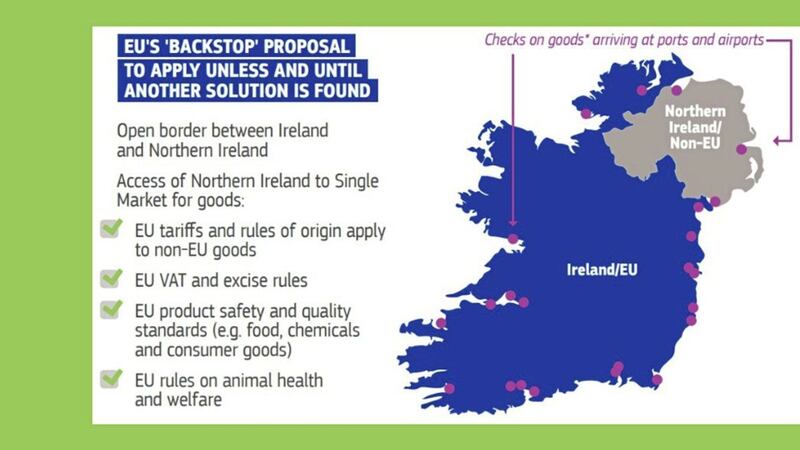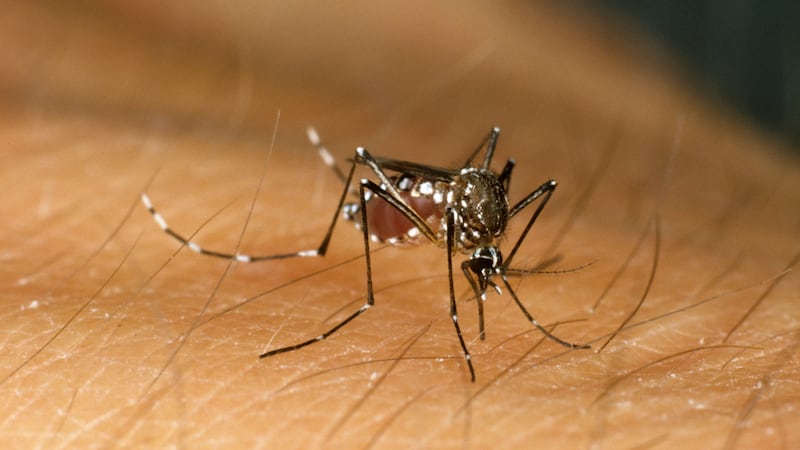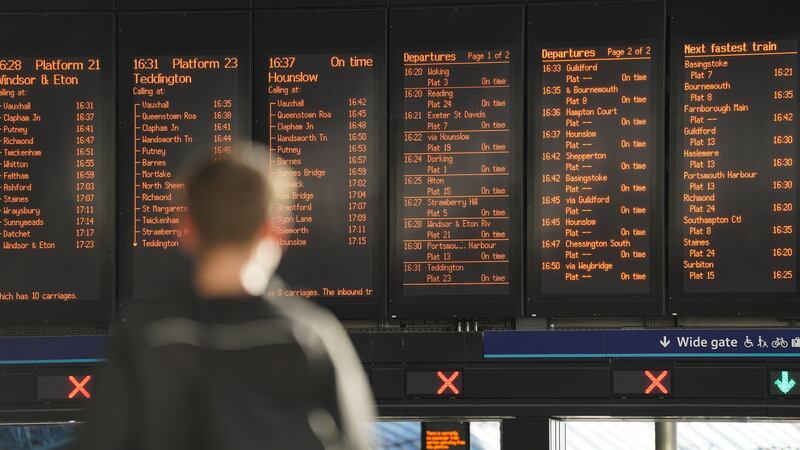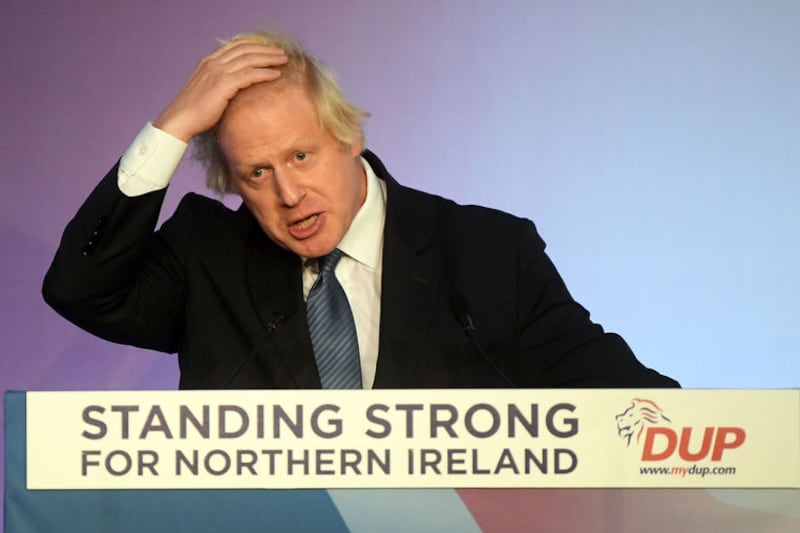THE EU has produced a graphic outlining its 'backstop' proposals on the Northern Ireland border post-Brexit.
It also released a set of slides yesterday summarising its concerns over the British government's proposals.
The graphic outlines how the European Commission sees its backstop position working to prevent a hard north-south border.
It would see the north effectively remain within the EU single market and customs union if no other solution is found when the UK leaves the European Union.
However, the UK is still pushing for a different border arrangement to be agreed.
British prime minister Theresa May in February said the EU proposals on Northern Ireland would "threaten the constitutional integrity of the UK" and "no UK prime minister could ever agree to it".
The British government's proposal, published last week, is that the UK temporarily aligns with the EU customs union.
But the EU set out several objections to the UK's "temporary customs arrangement" proposals in a series of internal slides published yesterday by the European Commission.
It warned the idea would lead to a hard border between Northern Ireland and the Republic because it does not cover regulatory checks.
The proposal was also branded a "piecemeal application" of EU rules that poses "serious risks of fraud".
And on the UK's insistence that the arrangement should be temporary, the EU said it would be a "complex and unprecedented arrangement" for a short duration and questioned whether this can be a proper backstop.
The commission described EU's own backstop proposals as a "timely and workable solution".
The British government said its plan would only apply in "specific and narrow circumstances", and delivers on a commitment made in December to avoid a hard border.







